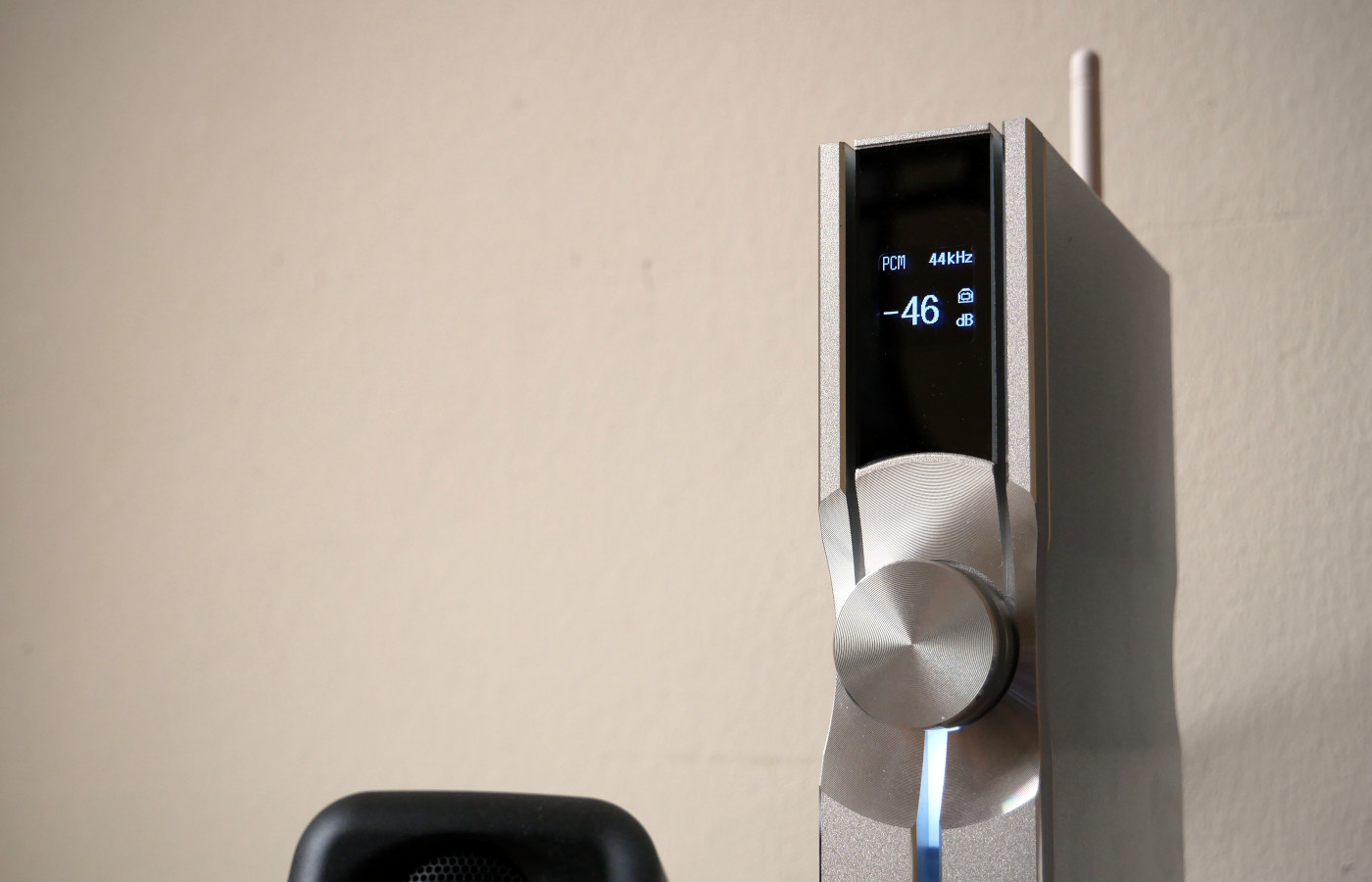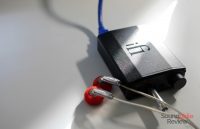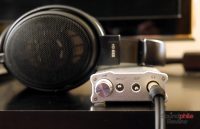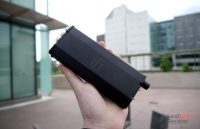Back in May 2019, when I was at the Munich High End (it seems like entire lifetimes ago), I spoke with people from iFi Audio and one of the topics that popped up was that of balanced connections: back then no iFi product outside of the Pro line had those, but they promised me something interesting was in the pipeline. A few months later they announced the new xDSD and xCAN, which were the first products to include balanced output. The line-up has since got bigger and better and the iFi NEO iDSD is the first non-Pro product to offer XLR line outputs to drive balanced amplifiers or powered monitors. It also has a 4.4 mm balanced jack and Bluetooth, which all concur to make it quite flexible. Oh, and it’s also gorgeous. Need I say more? (spoiler: yes. In fact, this review is 2420 word long.)
Disclaimer: thanks to Karina at iFi Audio for sending me a unit on loan. Additional info is available on the official website. The NEO iDSD retails for £699.
TL;DR: recap
| Pros |
Cons |
| Solid build with very nice design
1,040 mW output Balanced outputs including XLR Bluetooth with lots of codecs Transportable |
Not truly balanced Stock USB cable is too short Poor value compared to competition |
Rating: 7/10
Packaging & Accessories
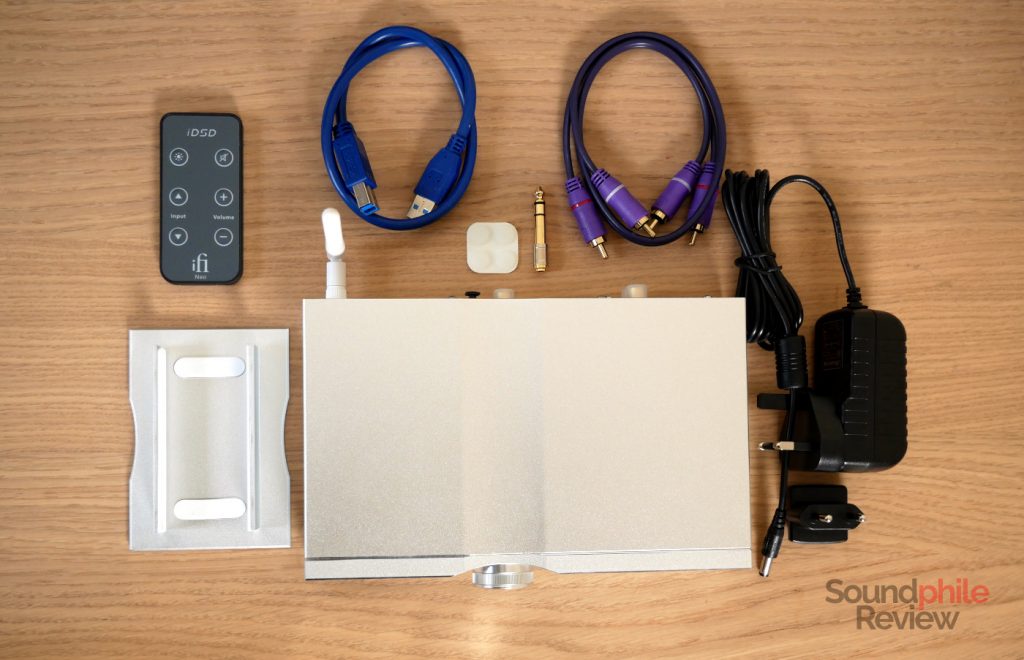
The package includes an aluminium stand, a USB cable (USB-A to USB-B), an RCA to RCA cable, the (optional) power supply, the remote and a 3.5 mm to 6.3 mm jack adapter.
The only complaint I have with the included accessories is the USB cable, which is really short. I had to use a patch cable in order to connect it to my laptop with both devices on the desk, as otherwise the cable wouldn’t have been long enough!
One thing I don’t especially like is the marketing jargon used on the box – it says “Ultra HD DAC + headphone amp”, creating a parallel with the Ultra HD standard (also known as “4K”) used for screens and projector, but there is no such a thing as “Ultra HD audio”. While it may convey the idea that the device is able to reproduce music at the highest possible resolution, it still doesn’t sound quite right to me.
Design & Build
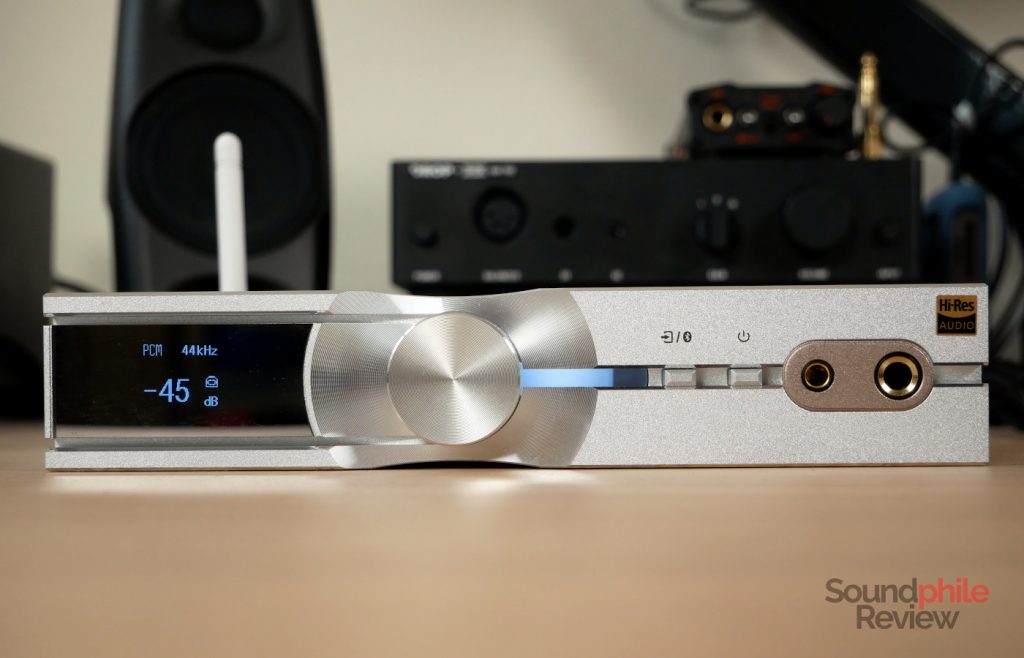
The iFi NEO iDSD is absolutely gorgeous. It is absolutely modern in its aesthetics, but in a way that blends in well with more “classic” gear. While the body has classic plain aluminium looks, the front is definitely livelier: on the left there is a black area with an OLED screen, encased by two grooves on each side, leading to the large volume knob. There’s then a single, larger groove on the right side where the status LED, the power button, the input selector and the two jacks (6.3 mm and 4.4 mm) are. There’s also a “Hi-Res Audio” sticker. The back, on the other hand, has a Bluetooth antenna, a power connector, a USB 3 Type-B port, an optical connector, a coaxial connector, two XLRs and two RCAs (one per channel).
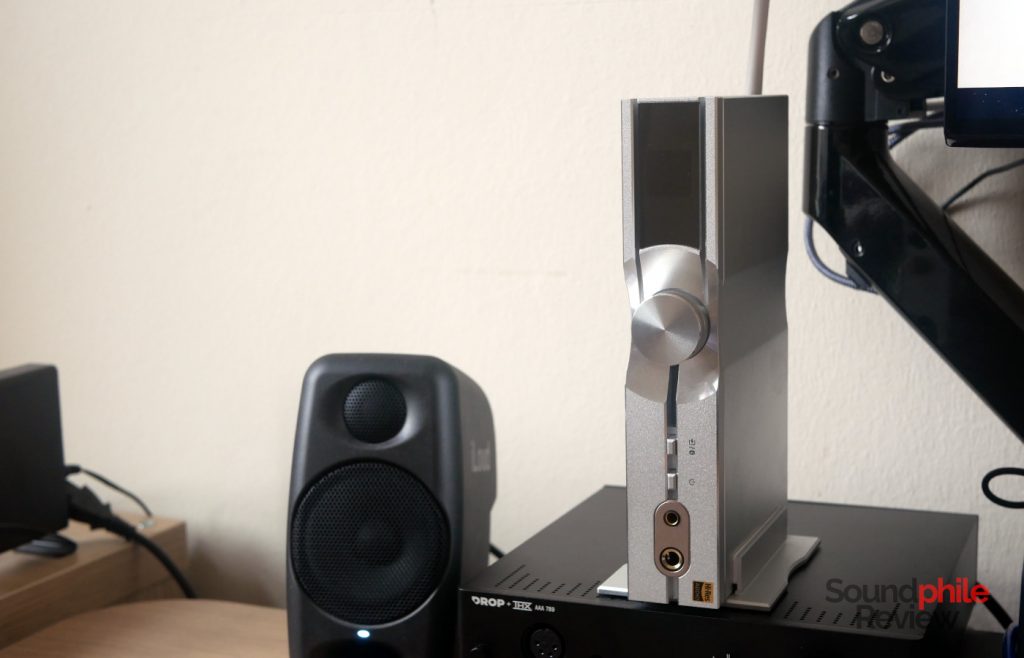
What I find quite interesting about the NEO iDSD is not only that its looks are timeless, so it can blend in whatever era your other gear hails from, but it can be used both horizontally and vertically. If you opt for this second option, iFi was so nice as to include a robust stand made of solid aluminium. It is a bit tricky to put it on, as it is just the right size for the device, but it also holds it quite well and feels secure. It has what seems neoprene strips to avoid scratching the NEO iDSD, plus the base has an anti-slip coating to avoid bad surprises.
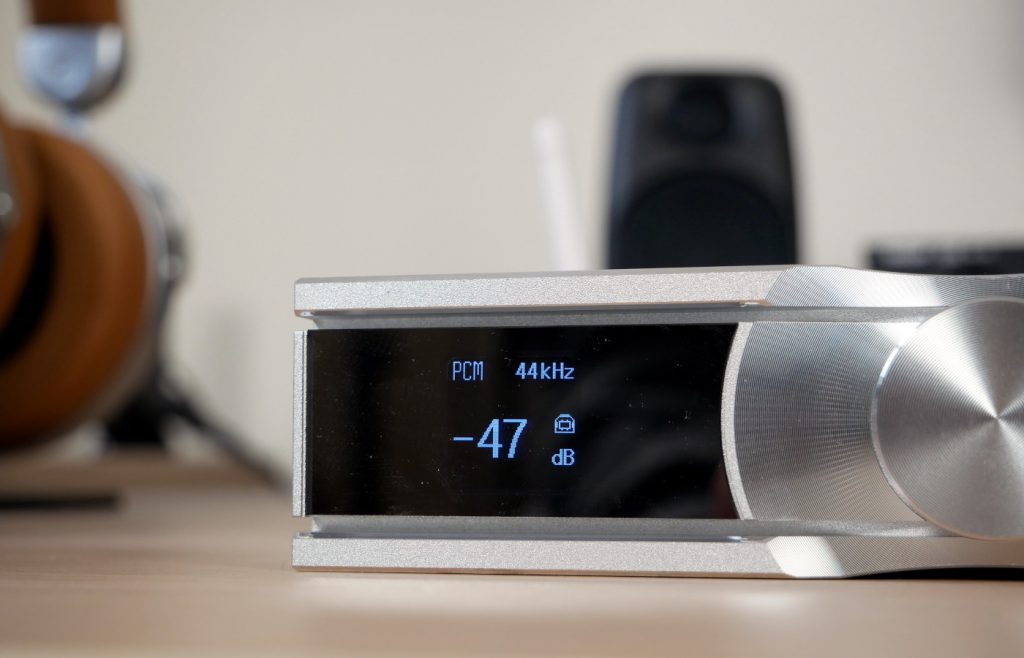
The display was quite cleverly engineered, so it rotates together with the rest of the device: if you hold the NEO iDSD vertically, it displays information upright – and it does so automatically! It seems iFi used an accelerometer to manage this without user intervention, which is a nice trick.
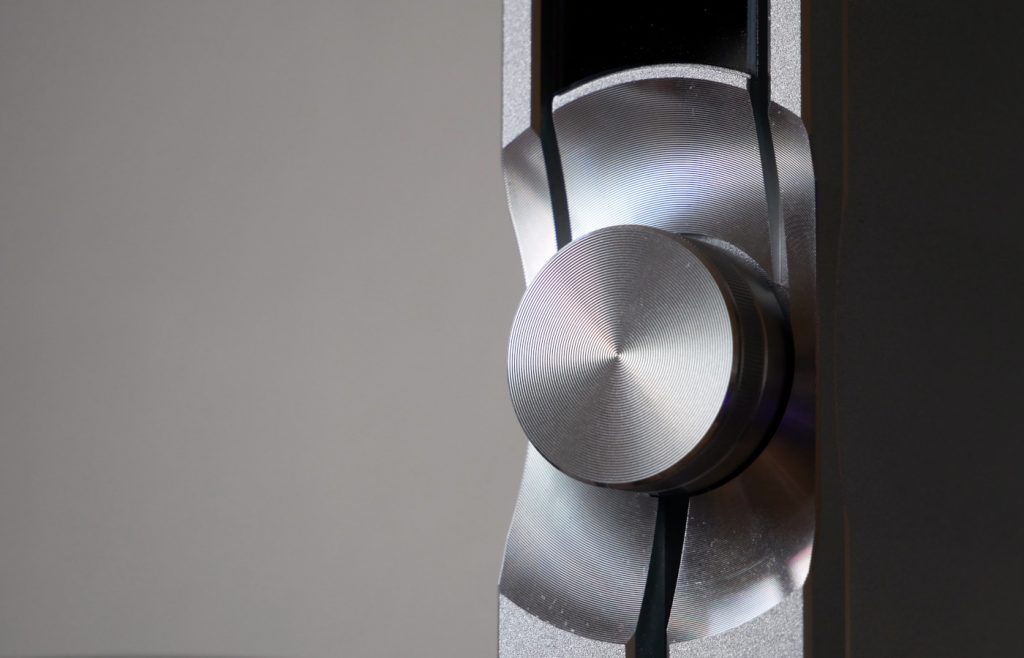
The knob is not a real knob in the sense that it spins endlessly and it has discrete levels indicated by clicks. It has a bit of weight to it, but it spins almost freely. It’s good to adjust the volume rapidly with large variations, but I would otherwise prefer a bit more weight to it. It has grooves all around it so gripping it is quite easy. What I love about the design of the iFi NEO iDSD is that the area around the knob has a circular depression with a lot of tiny grooves etched on it, so it reflects light in a weird way and creates a lot of interesting effects (which are quite hard to capture on camera).
The NEO iDSD comes with a remote which allows you to access all the features of the device from a distance: you can adjust the volume, switch inputs, adjust the screen brightness (which you can’t do without the remote!) and putting the device in mute. The only thing you can’t do is turning the device on and off, which is a bit of a bummer. One funny thing I noticed is that there is some interaction with other gear I use. To be more specific, I have been using a Topping DX7 as well, controlling it with its own remote. It seems like the frequencies used by the DX7’s remote to lower the volume are the same used by the NEO iDSD to change input. While it’s not an issue, it’s certainly a funny coincidence.
Features & Specs
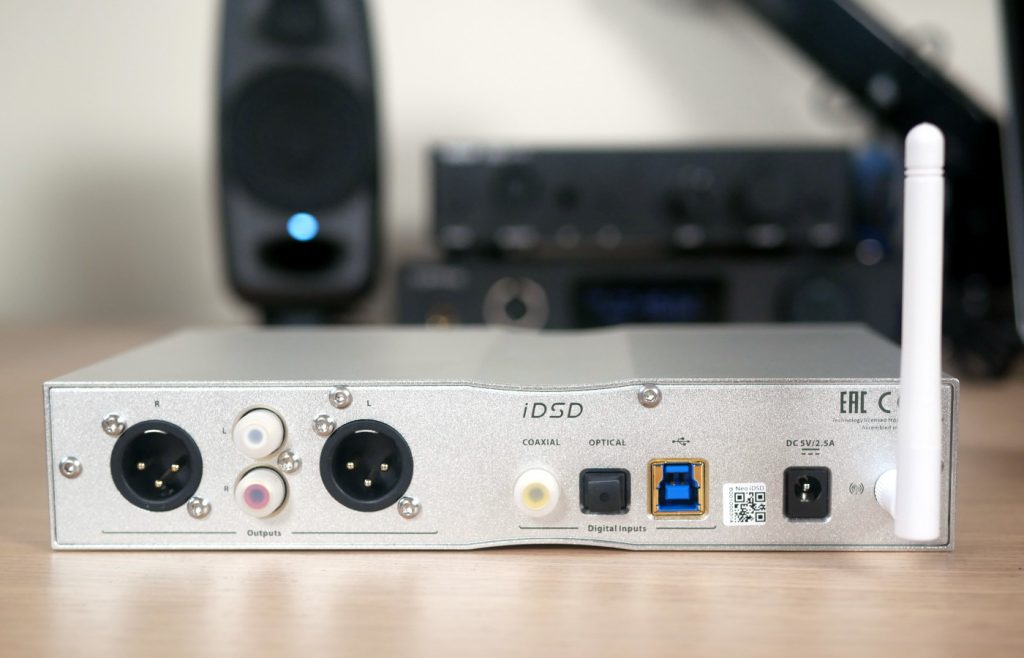
There is quite a lot going on in terms of inputs and outputs on the iFi NEO iDSD: on top of USB there are also optical, coaxial and Bluetooth in terms of input, while output is either headphones, RCA or XLR. One thing you can’t do on the NEO iDSD is select the output, so you can’t switch between headphones and, say, powered speakers. This is a bit of a limitation and while it isn’t a major roadblock, it still would be nice to have in a device that costs around 700 quid.
Output can be either fixed or variable, the latter of which is helpful if you want to use the RCA or XLR output – e.g. to use an external amplifier or powered speakers like the iLoud Micro Monitor or the KEF LS50 Wireless.
The iFi NEO iDSD can be powered using the provided power supply, but it is not strictly needed: the USB cable is more than enough, actually. In fact I wondered how much this was true: would just USB power be enough? I decided that this question needed an answer, so I set up a small experiment (for the sake of science, of course, definitely not for the fun of it): I took the NEO iDSD, hooked it up to a power bank, pressed the power button… and it powered up! This makes the NEO iDSD a portable unit that you can power with anything outputting 0.5 A at 5 V – basically anything with a USB port.
I had no issues using the iFi NEO iDSD with Linux, it’s purely plug and play. It should be on macOS, too, while on Windows you might need drivers.
iFi NEO iDSD |
| Input | USB (up to 32 bit / 768 kHz PCM/DXDx2, up to DSD512, MQA) Bluetooth (up to 24 bit / 96 kHz) |
| Suitable headphones impedance | 16 – 600 Ω |
| Output impedance | < 1 Ω |
| Maximum output power | Single-ended:
Balanced:
|
| Frequency response | N/A |
| THD+N (@1 kHz) | < 0.0015% |
| SNR | > 120 dB |
| Crosstalk | N/A |
iFi says the NEO iDSD adopts a “purist design”, meaning there are “no DSP, no digital filter selection and no change in analogue playback”. In other words, it tries to deliver you the music “as it is” without manipulation: that’s quite a change from the other products by them, considering most of them have bass boost, a soundstage enlargement feature and a selectable filter. They call their balanced design “PureWave”.
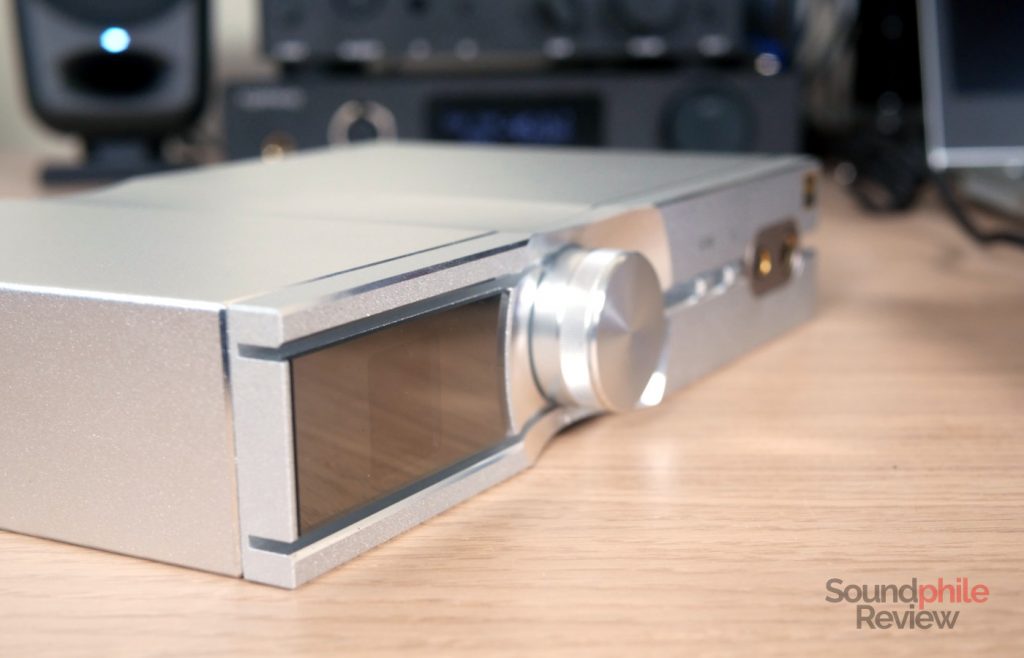
iFi chose a Burr-Brown DAC as the base for the device: not really a surprise, given that all of their products use Burr-Brown chips. iFi doesn’t clarify neither on their website nor on the manual whether they use a single DAC chip or two; I asked them and they said that in fact there is just one DAC chip, after which the amplification is dual-mono. The takeaway is that the NEO iDSD is not truly balanced: not an issue per se, but a stark difference from the competition that actually offers such a feature. The amplification stage is managed by op-amps, which deliver up to 1,040 mW at 32 Ω using the balanced output – quite a large amount of power that will tame even the hardest headphones out there.
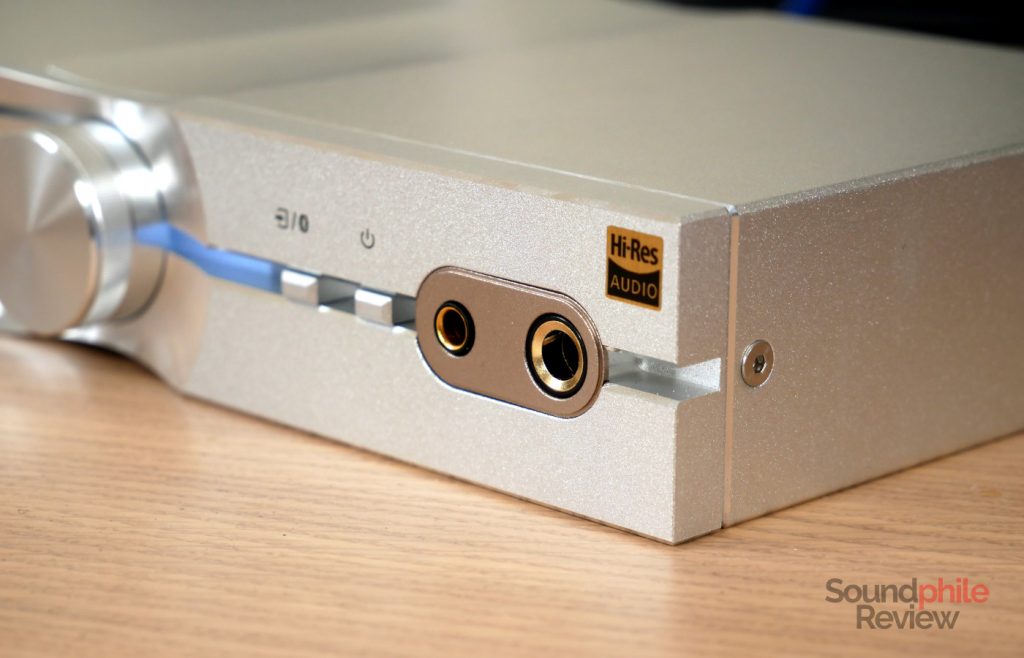
Volume adjustment is done in discrete amounts and with a precision of a single dB – so no half-decibel adjustments are possible. This works quite alright most of the time, though, and I’ve never found myself wishing I could go just a half dB up (or down).
The iFi NEO iDSD offers Bluetooth 5.0 with a vast amount of codecs which includes aptX, aptX HD, aptX Adaptive, aptX LL, LDAC, HWA/LHDC, AAC and SBC – basically every codec out there! That’s quite great as it allows you to use practically any device as source, plus it is updatable to include future codecs. It’s too bad it can’t be used as a transmitter! It has a memory that holds up to 7 paired devices, so you won’t have to pair it again every time you switch to another source. The range is quite good and allows you to move your source device around a room (and even outside it) without a hitch; more probably, though, you would want the signal to be stable if the source is far and that’s actually the case.
Sound
I tested the iFi NEO iDSD using various headphones, but mostly the IKKO OH-10 and the HiFiMAN HE-R10 Planar, using my laptop as the source through USB. Most files were FLACs in 16 bit, 44.1 kHz resolution.
The iFi NEO iDSD has an issue: there is a constant background hiss, almost a whistle-like sound actually, even when using the balanced output that should theoretically prevent issues like this. The hiss was especially present when I used low-impedance earphones (think lower than 64 Ω). I am confident the issue lies with the device as I tried various methods of powering it, all leading to the same result: using the provided power supply, the USB cable connected to my PC and even the USB cable connected to a power bank (which delivers clean power by definition, being it a battery) all led to the hiss being present. I thought this might have to do with the choice of USB 3.0, which is far noisier than USB 2.0 and is therefore widely not recommended for audio applications, but that’s not the case: the hiss is there even when connecting the device to mains power without any actual USB cable being connected. So what this tells us is that there is an issue with the design of the NEO iDSD which leads to it being noisy. Using a device such as the iFi EarBuddy or earphones and headphones with high impedance and/or low sensitivity I could remove the hiss, but that’s not ideal and definitely not what one would want from a device that costs 700 quid.
Update: when I was writing this review, I contacted iFi to inform them of this issue and they said they found a small set of units that had it, but that the issue could be fixed with a firmware update. We agreed to publish the review anyway. They then sent me a second unit that does not have the issue, so you can disregard the paragraph above (but not the one below!).
Allow me to make a brief excursus to emphasise the importance of testing equipment with a large variety of earphones and headphones. Even famous websites that receive a lot of praise often forget to do this, thereby failing to uncover issues such as this and promoting this very device as “lacking hiss, noises, clicks and pops”… just because they did not test it with sensitive earphones. I mentioned two headphones at the beginning of this section, but I actually used about ten with various values of impedance and sensitivity in order to make sure the device worked well with all possible headphones. Having a well-defined and tested method and using it for all reviews, spending actual time with the devices (I tested the NEO iDSD for more than a month before publishing this review! Also, thanks to the fine people at iFi for being so patient!) and trying to understand both the pros and the cons of the products, without turning reviews into advertisement, are all important factors that allow one to produce high-quality reviews.
The iFi NEO iDSD sounds dead neutral to me. Even when compared to the Drop THX AAA 789, which is widely considered among the most neutral amplifiers out there, the NEO iDSD sounds practically indistinguishable when it comes to the tuning. As much as I would like to find minute differences to describe in flowery prose, I can’t honestly find any of any significance. What I can hear is a difference in the transients: the NEO iDSD is slightly slower, with a bit less physicality and impact. There’s also a smidgen less detail. But this only became noticeable once I compared the two devices, as otherwise the listening experience on the NEO iDSD is absolutely flawless.
All headphones I tried showed no issues at all, including those with higher impedance such as the Sennheiser HD 6XX or the Venture Electronics Zen 2.0. The NEO iDSD drives them all with the same aplomb and with the same good results. Soundstage, imaging, and everything else you can think of is spot-on and doesn’t require much comment – it’s as you expect it to be.
Final Thoughts
The iFi NEO iDSD takes balanced outputs for desktop devices to a much lower price point than that of previous iFi products: previously only the Pro line offered balanced outputs, but those products cost thousands of pounds. The NEO iDSD is true to its name in that it is a completely new range for the British manufacturer. It sits in quite a crowded area which is rapidly evolving and where a lot of competition is happening. And this is the main issue of the NEO iDSD. Competitors, such as the Topping DX7 Pro, offer more for the same money: more power output (1,700 mW vs 1,040 mW), more inputs (all of the iFi’s, plus AES and IIS), more outputs (DX7 Pro also has XLR for headphones), more flexibility (can select output as well) and better measurements.
While it has quite a few things going on for it, the NEO iDSD is not really competitive with the market right now. Two years ago it would have been much more competitive, but nowadays its specs make it seem less appealing than devices from competing brands. It sounds good and it has a great design, but is that enough? At this price point I expect devices to be near perfect and to offer me great flexibility, which the NEO iDSD doesn’t. Had it been priced around £500 it would have been much better. £700 are simply not justifiable at the beginning of 2021.

